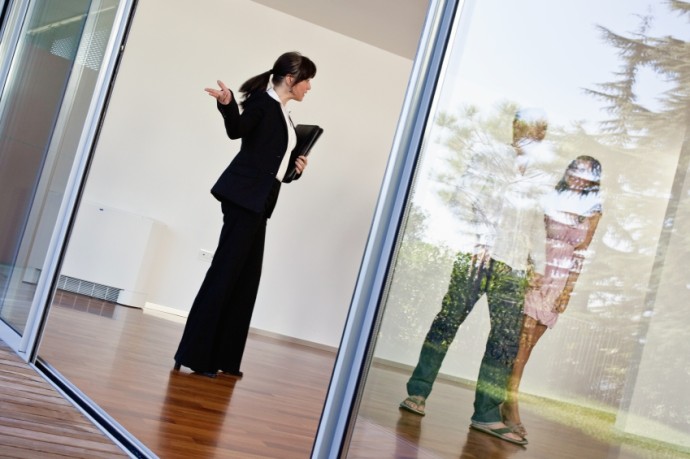5 Walk-Through Surprises and How to Avoid Them
A house may look one way when it is decorated and furnished, but once vacated, bumps and bruises may show that could cause a wrench in the closing. Here are five common issues that arise during a walk-through and how to handle them.
The following is a guest post from Cara Ameer, an agent with Coldwell Banker Vanguard Realty in Ponte Vedra Beach, Florida.
You’ve survived the inspection and loan approval process. You are almost to the closing table and ready to sign on the dotted line, but before you arrive, there is one last hurdle to climb known as “the walkthrough.” Whether you are a buyer or seller, this process can be nerve-wracking – as a buyer, you may be thinking: Will the house will still look how I thought it did? Will everything be empty and in good condition? And as a seller, you could be worried whether the buyer will be satisfied with what they see, and what if they raise concerns?
First, it is important to understand what a walkthrough is as well as its purpose.
A walkthrough is when a buyer walks through the property either the day prior or on the way to closing to ensure all is in substantially the same condition as it was before.
You may think this is a quick process that should take no more than 10-15 minutes at the most, but it is the buyer’s last look at the house before making what is likely the single largest purchase in their life. They will be closely scrutinizing everything. Additionally, because in all likelihood this is their first time seeing the house completely empty, this could raise some issues not previously seen.
A house may look one way when it is decorated and furnished, but once vacated, bumps and bruises may show that could cause a wrench in the closing. Here are five common issues that arise during a walkthrough and how to handle them:
1. Flooring – discolorations on wood or carpet. This happens as a result of furniture and rug placement over long periods of time, coupled with sunlight that could cause fading or discoloration of the exposed flooring around it. The buyer doesn’t initially see this, as a seller’s belongings are never moved for showings or inspections. Consequently, on a walkthrough of a vacant house, this could result in visibly noticeable variations in the floor finish as well stains, particularly on carpet. As a seller, you may have forgotten about some stains that are on the carpet where furniture and/or area rugs have sat on top of it for years.

Before putting your house on the market, check any areas of your home that have had furniture and/or rugs sitting on top of floor surfaces. If there is discoloration, consult with a wood flooring specialist on how to address, call in carpet cleaners or consider possibly replacing/repairing the flooring in question before going on the market. Note any issues upfront to establish condition at the time the home goes on the market to a buyer and on a seller’s disclosure so as to avoid any surprises later on.

2. Walls — Once the artwork and flat screen TVs comes down, the walls are often left with nail holes, brackets and possibly discoloration where objects were previously hung. While it may seem premature when an offer is received to even think about dismantling the house, discuss with your agent a plan for “spackle management” when finalizing contract terms. Better to deal with this upfront vs. trying to figure out what to do right before closing because nothing was mentioned in the contract. Setting realistic expectations at the outset as to what you as a seller will do, such as spackling, will hopefully avoid a buyer’s request for you to repaint walls entirely. It may be that the buyer likes the existing placement for artwork and your television and will want these areas left as you had them.
3. Leftovers – While these are always appreciated after a good Sunday dinner, your left over house stuff is not always wanted or needed by the buyer of your home. Moving always brings a “don’t know what to do with pile.” It may be a stray chair, file cabinet, old lawn hose or other various odds and ends. Don’t assume the new owner will be glad to have these items. Check with the buyer first, if they don’t want them, play it safe and have them removed BEFORE the final walkthrough.
4. Garbage – Speaking of removal, don’t leave garbage cans full of trash for the new owner to take out. The buyer has enough to deal with as far as coordinating movers, getting utilities turned on, waiting for the cable guy and all that goes along with setting up a new home. This is usually a surprise not discovered until the walkthrough or their first trip to the house as the new owner. A pile of trash either in the garage or on the driveway is not a closing gift that should be left behind.

5. Mover Damage – With a moving crew transporting furniture and boxes out of your house, the opportunity exists for unintended damage to occur. Drywall dings, nicks, scratches or gauges can be left, often not discovered until a buyer does their walkthrough, or of course right after they go to the house after closing. Once the movers are finished, do your own “move-out” walkthrough with them to check for any damage. Discuss with your movers ahead of time the plan for handling any damage and have a trusted repair person on standby to take care of any issues should they occur.




